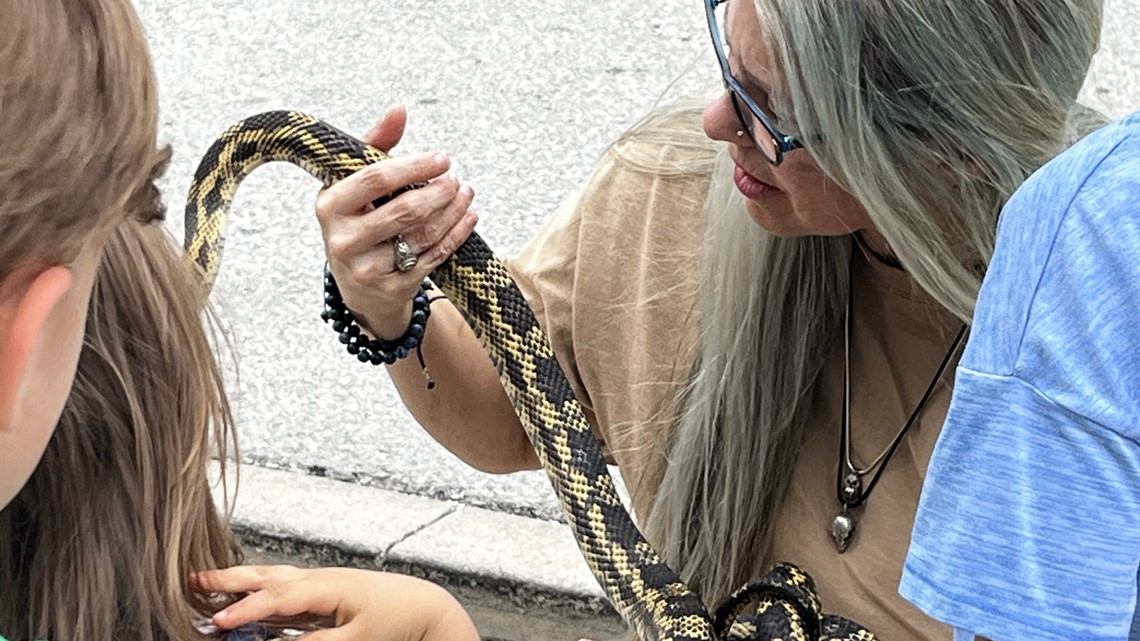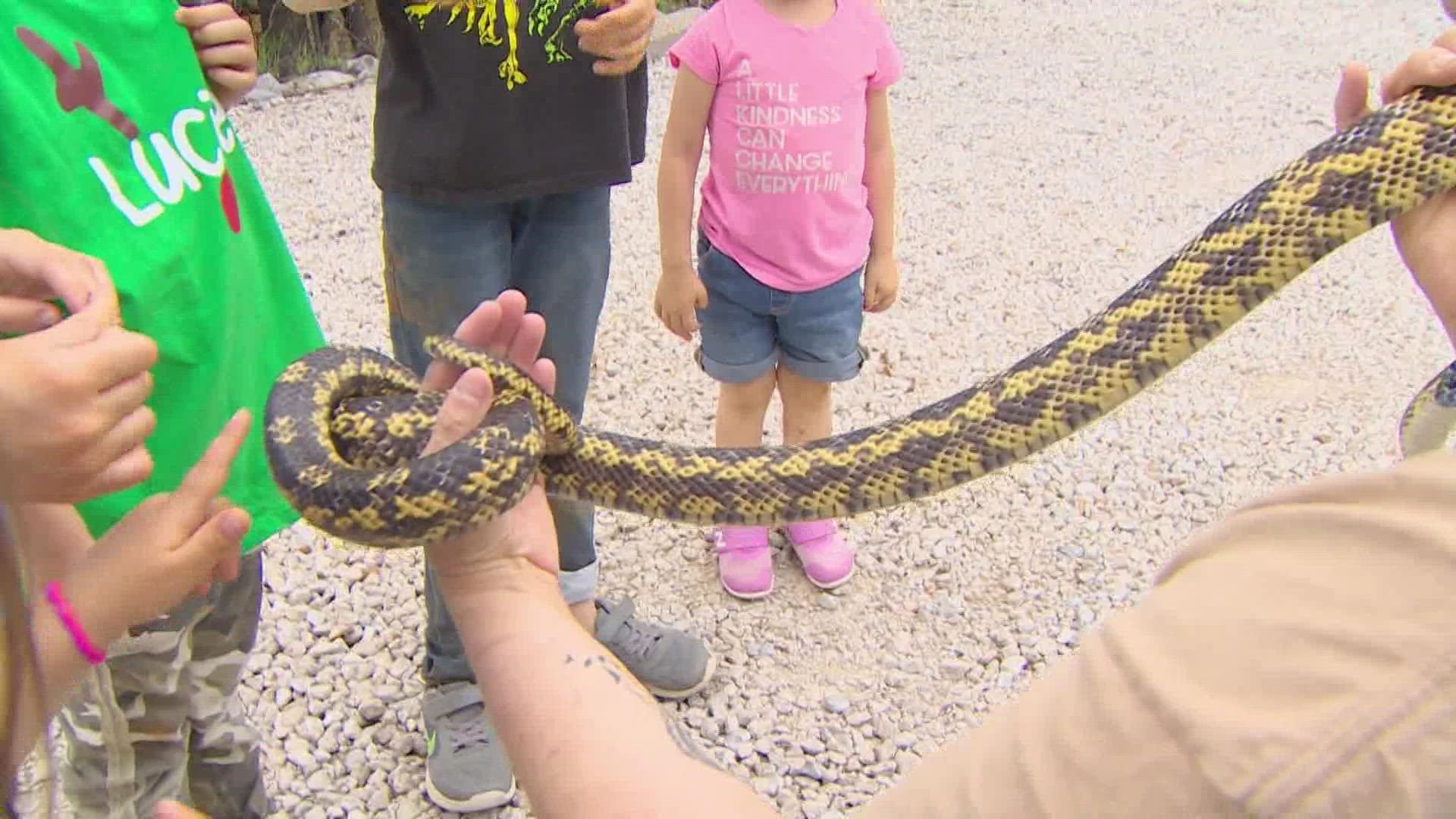TARRANT COUNTY, Texas — Some Tarrant County children got the chance to learn this week that some of the myths about snakes just are not true.
They learned it from wildlife expert Brandi Nickerson. She says Texans can expect to have more snake encounters as the temperatures start to heat up across the state.
But snakes move around during the colder months too.
"What we want to do is educate people and empower people," said Nickerson.
As someone who has learned to handle all kinds of snakes and other wildlife animals, Nickerson wants to help families learn what to do when a snake visits their home.
"What we want people to understand and learn is that snakes are a part of this ecosystem and that they should be respected, that's it," said Nickerson.


Recently, a homeowner in Crowley warned her neighbors on the Nextdoor app about her surprise snake visit. As she enjoyed a cup of coffee on her patio this week, she recalled hearing a hissing sound. She knew right away it was not her cat and investigated the strange sound.
After looking to the patio floor near the legs of her chair, Crowley spotted a snake. People on the app helped her identify the fact it was not a poisonous snake, so she allowed it to crawl away.
Hours later, Crowley updated her post to say she spotted the same snake in the garage.
In cases like this, Nickerson helps people in the Facebook group “What kind of snake is this?”. There are about 167,000 members in the group, and that number is growing every week.
"You can post a picture of a snake you saw, and almost in less than a minute you can get an identification for that snake,” said Nickerson.
Although most of the snakes roaming around in Texas are not poisonous, Nickerson recommends only taking a photo or video of a snake when it's safe to do so.
Nickerson also warns don't make your home the perfect habitat for snakes: Avoid things like stacking firewood on the ground. Don't overlayer your mulch in flowerbeds, which would give snakes space to burrow.
She also suggests making sure crawl spaces under your home or shed are not easily accessible for snakes or other small animals.
"For your bushes and shrubs, keep those trimmed up off the ground at least 12 inches so you take away a snake's hiding place," said Nickerson.
But, as a wildlife expert, she stresses education is the best weapon to protect yourself against possible snake bites, especially at a young age.
"You can also teach your kids from a very young age what a snake looks like and to leave it alone,” said Nickerson.
Contrary to popular belief snakes do not chase people. They do bite to protect themselves as a self-defense mechanism or if stepped on accidentally, according to Nickerson in many cases.
You can learn more about protecting yourself and identifying snakes at:

